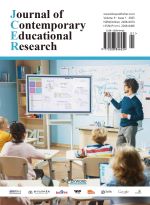Teaching Reform of Communication Application Development Course under the Background of Engineering Education Accreditation
Abstract
This study focuses on the teaching reform of the communication application development course based on the core requirements of engineering education accreditation. To address key challenges such as the disconnection between software and hardware teaching and insufficient practical skills among students, a project-driven “learning-practice-application” teaching model is proposed. By optimizing course content, innovating teaching methods, and introducing university-industry collaboration mechanisms, the reform aligns the curriculum more closely with engineering education standards and industry demands. The approach significantly enhances students’ comprehensive skills, practical abilities, and employability. This study provides theoretical foundations and practical strategies for the teaching reform of courses in communication engineering.
References
Cheng X, Qian F, 2024, Integrated Practice Curriculum and Moral Education in Engineering Education: Cultivating Quality Engineers for Sustainable Development. Journal of Higher Education Teaching, 1(6): 32–37.
Wang F, Wang X,2024, Teaching Reform in the Context of Engineering Education Accreditation—Taking the Mechanical Design, Manufacturing and Automation Major as an Example. Advances in Educational Technology and Psychology, 8(1): 1–8.
Ren X, Yin H, Tang Y, et al., 2023, Construction of Innovative Ability Evaluation System for College Students Inspired by Engineering Education Accreditation. Frontiers in Educational Research, 6(24): 7–11.
Francese R, Gravino C, Risi M, et al., 2015, Using Project-Based-Learning in a Mobile Application Development Course—An Experience Report. Journal of Visual Languages Computing, 31: 196–205.
Hamuy E, Galaz M, 2010, Information Versus Communication in Course Management System Participation. Computers & Education, 54(1): 169–177.
Wang J, Odell SJ, Klecka CL, et al., 2010, Understanding Teacher Education Reform. Journal of Teacher Education, 61(5): 395–402.
Bruns B, Macdonald HI, Schneider RB, 2019, The Politics of Quality Reforms and the Challenges for SDGs in Education. World Development, 118: 27–38.

